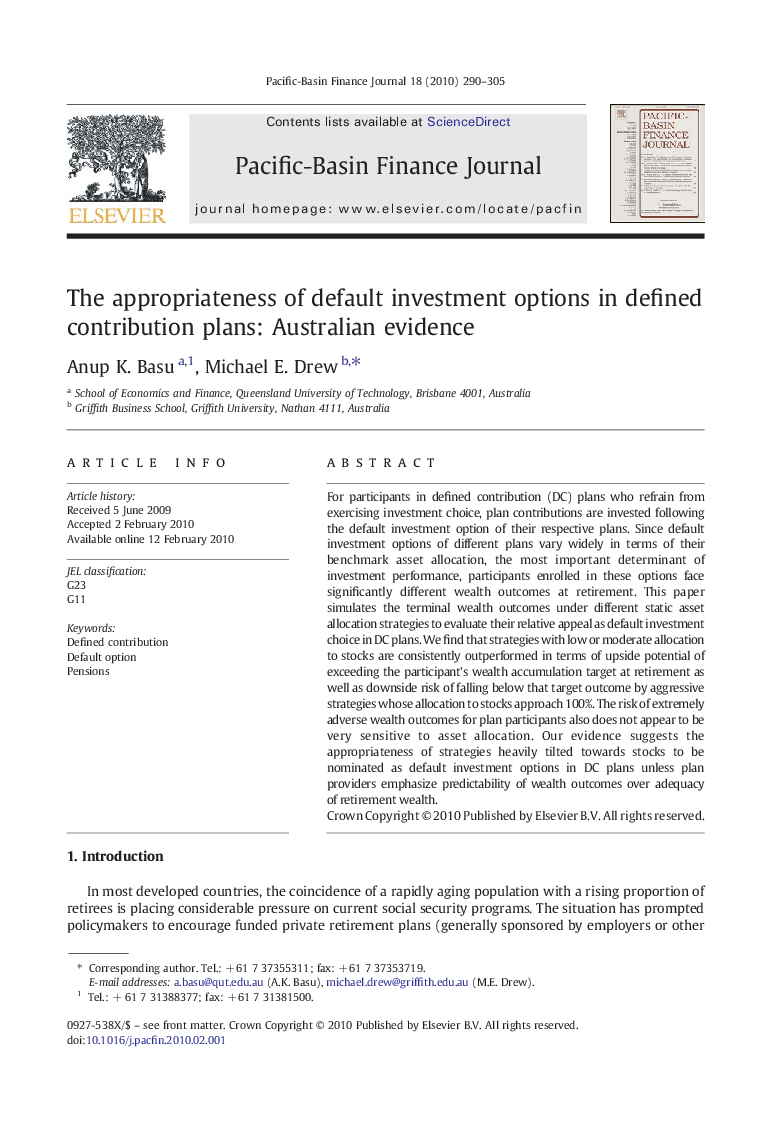| Article ID | Journal | Published Year | Pages | File Type |
|---|---|---|---|---|
| 973779 | Pacific-Basin Finance Journal | 2010 | 16 Pages |
For participants in defined contribution (DC) plans who refrain from exercising investment choice, plan contributions are invested following the default investment option of their respective plans. Since default investment options of different plans vary widely in terms of their benchmark asset allocation, the most important determinant of investment performance, participants enrolled in these options face significantly different wealth outcomes at retirement. This paper simulates the terminal wealth outcomes under different static asset allocation strategies to evaluate their relative appeal as default investment choice in DC plans. We find that strategies with low or moderate allocation to stocks are consistently outperformed in terms of upside potential of exceeding the participant's wealth accumulation target at retirement as well as downside risk of falling below that target outcome by aggressive strategies whose allocation to stocks approach 100%. The risk of extremely adverse wealth outcomes for plan participants also does not appear to be very sensitive to asset allocation. Our evidence suggests the appropriateness of strategies heavily tilted towards stocks to be nominated as default investment options in DC plans unless plan providers emphasize predictability of wealth outcomes over adequacy of retirement wealth.
